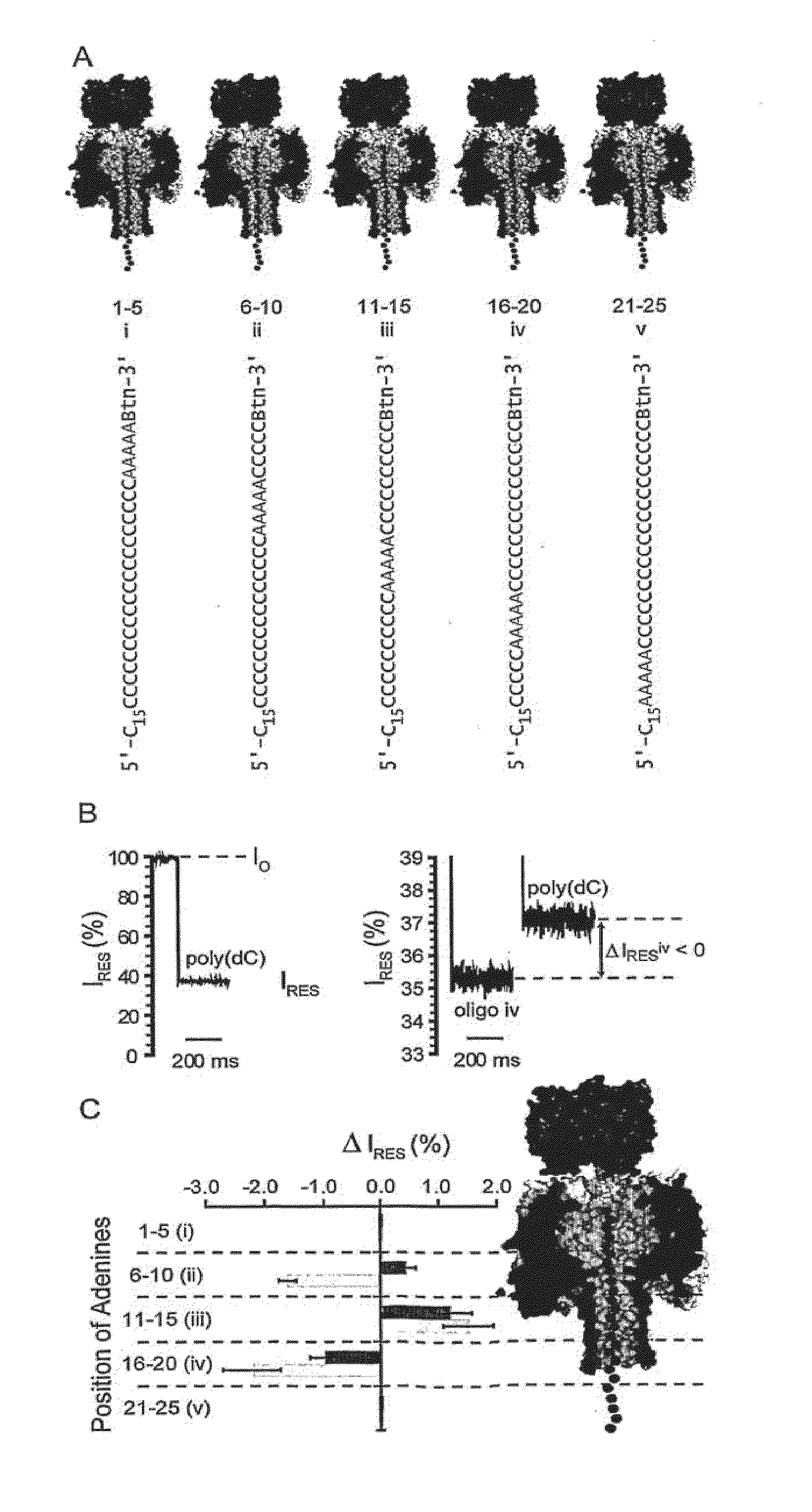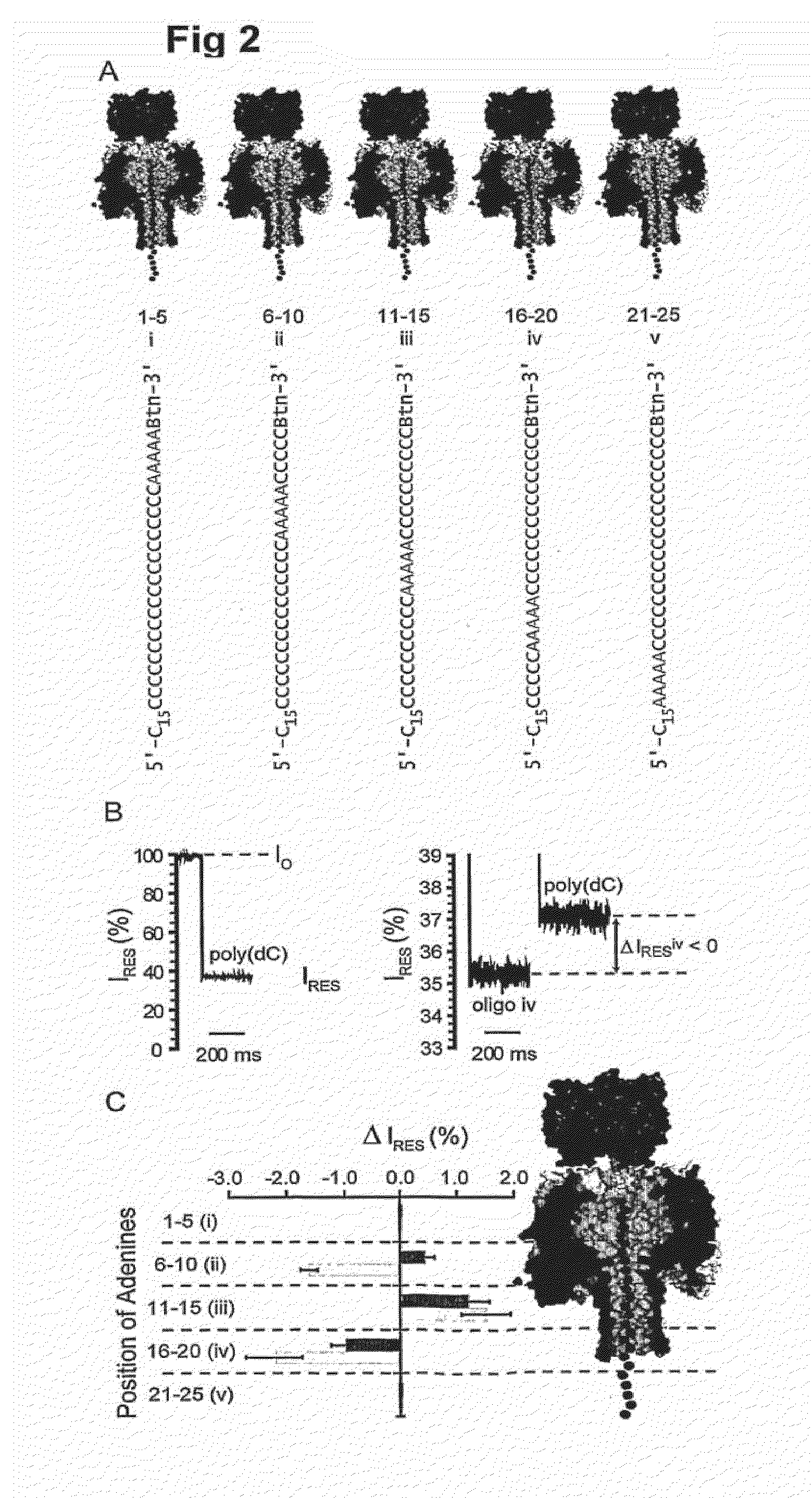Method for sequencing a heteropolymeric target nucleic acid sequence
- Summary
- Abstract
- Description
- Claims
- Application Information
AI Technical Summary
Benefits of technology
Problems solved by technology
Method used
Image
Examples
example 1
2 Example 1
2.1 Improved Discrimination of Oligonucleotides with a Mutant α-HL Pore
[0280]ssDNA oligonucleotides (SEQ ID NOs: 13 and 14) with biotin tags at the 3′ terminus were allowed to form complexes with streptavidin. In this state, the DNAs were captured and immobilized by α-HL pores in an applied potential, but they were not translocated into the trans compartment (FIG. 1A). The immobilized DNA molecules caused a sequence-dependent decrease in the current flow through the pore (FIG. 1B), and here we quote the residual current (IRES) as a percentage of the open pore current (IO). We examined the WT α-HL pore and the pore formed by E111N / K147N. The latter forms stable pores despite the removal of the electrostatic interactions between Glu-111 and Lys-147 residues at the central constriction (Gu, L.-Q., Cheley, S., & Bayley, H. (2001) J. Gen. Physiol. 118, 481-494). We hoped that the increased space at the constriction would cause more current to flow in the presence of DNA and he...
example 2
3 Example 2
[0293]To facilitate the observation of base recognition derived from current block, DNA strands can be immobilized within the α-HL pore by using a terminal hairpin or a biotin•streptavidin complex, which improves the resolution of the currents associated with individual nucleotides, because of the prolonged observation time (N. Ashkenasy, J. Sánchez-Quesada, H. Bayley, M. R. Ghadiri, Angew. Chem. Int. Ed. Engl. 2005, 44, 1401). The immobilized strands reduce the open pore current level, IO, to a level IB. In this Example, we quote the residual current IRES as a percentage of the open pore current: IRES=(IB / IO)×100. By using the biotin•streptavidin approach, we recently demonstrated that the 5 nm-long β barrel of the α-HL nanopore contains three recognition sites, R1, R2 and R3, each capable of recognizing single nucleotides within DNA strands (D. Stoddart, A. Heron, E. Mikhailova, G. Maglia, H. Bayley, Proc. Natl. Acad. Sci. USA 2009, 106, 7702). R1 is located near the in...
PUM
| Property | Measurement | Unit |
|---|---|---|
| Fraction | aaaaa | aaaaa |
| Fraction | aaaaa | aaaaa |
| Fraction | aaaaa | aaaaa |
Abstract
Description
Claims
Application Information
 Login to View More
Login to View More - R&D
- Intellectual Property
- Life Sciences
- Materials
- Tech Scout
- Unparalleled Data Quality
- Higher Quality Content
- 60% Fewer Hallucinations
Browse by: Latest US Patents, China's latest patents, Technical Efficacy Thesaurus, Application Domain, Technology Topic, Popular Technical Reports.
© 2025 PatSnap. All rights reserved.Legal|Privacy policy|Modern Slavery Act Transparency Statement|Sitemap|About US| Contact US: help@patsnap.com



